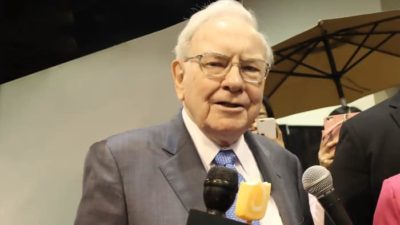This article was originally published on Fool.com. All figures quoted in US dollars unless otherwise stated.
"Space is hard" goes the old saw among space investors. But here's a new truism you might want to memorize: Space is hard -- and it can also be weird.
Investors got their latest lesson in just how strange space investing can get late last month, when NASA revealed that it's planning a new mission to send a volunteer space mission into orbit to adjust the orbit of the Hubble Space Telescope -- and potentially extend the telescope's lifespan by another 15 to 20 years.
Cue Elon Musk
It should surprise exactly no one to learn Elon Musk is at the center of this latest "weird space news" story. As NASA explains, the space agency has signed an agreement with SpaceX to study potentially sending a "Polaris Program" mission Crew Dragon spacecraft to Hubble, where it will dock with the telescope and use the engines on the Crew Dragon to lift Hubble to a higher orbit.
For those not familiar with Polaris, this is the private space initiative set up by pilot, billionaire, and Shift4 Payments (NYSE: FOUR) CEO Jared Isaacman last year. Polaris was initially founded to run the Inspiration4 mission that sent four private astronauts (Isaacman captained the crew) to space for a three-day orbit of the Earth in September 2021.
It has since evolved into a multi-mission project that will launch at least three more times -- all aboard SpaceX spaceships -- and attempt to set records for the highest Earth orbit crewed mission ever flown, the first private spacewalk, and the first test of SpaceX Starlink laser-based communications from space, to space.
Which brings us back to NASA -- and Hubble.
As NASA advised late last month, Polaris and SpaceX have proposed running a mission "at no cost to the government," aiming to potentially keep the 32-year-old Hubble Space Telescope in operation into the 2050s. Although there may be some risk in allowing private contractors to take control of the NASA satellite, the alternative is to allow Hubble's orbit to decay naturally -- in which case the spacecraft might fall back to Earth as early as 2030.
And of course, the fact that the mission would be performed gratis for NASA just adds to the attraction.
Space volunteers
The volunteer nature of this mission, however, does raise some questions for space investors going forward. Chief among them: How are for-profit companies like Northrop Grumman, Boeing, and Lockheed Martin supposed to compete with a company like SpaceX if it's -- even only occasionally -- going to run off and do volunteer work for NASA for free?
In this particular case of the Hubble mission, of course, it wouldn't really be SpaceX volunteering its services. Rather, billionaire Isaacman -- who is hiring the SpaceX Falcon 9 rocket ship for his flight anyway -- will be picking up the tab.
But in future years, as the cost of spaceflight plummets (in and of itself a problem for space launch companies like the Boeing-Lockheed joint venture United Launch Alliance), the chance that SpaceX might do further missions for free, in order to ingratiate itself to its biggest customer, could rise.
After all, according to SpaceX, once it gets its Starship mega-rocket up and running, the cost of each launch could theoretically fall as low as $2 million -- a relative rounding error that could prompt SpaceX to do some missions for free.
And SpaceX isn't the only space company that's begun performing science missions for free. Upstart small rocket company Rocket Lab (NASDAQ: RKLB), for example, is promising to send a space probe to Venus sometime next year. With funding provided by philanthropists, MIT, and Rocket Lab's own cash, the mission could cost as little as $10 million -- or about 2% of what NASA pays private contractors to conduct similar missions.
What it means for investors
Suffice it to say: This is not how for-profit companies ordinarily operate.
And, yes, as a space fan myself -- and as a taxpayer -- I applaud the idea of private businesses using their own capital, and supplementing it with help from philanthropists, to advance the cause of space exploration. As an investor, however, I do wonder what this might mean for for-profit aerospace companies like Boeing, Lockheed, and Northrop.
The good news is that, according to data from S&P Global Market Intelligence, these three companies in total still enjoy annual "space" revenues in excess of $30 billion, largely paid for by NASA and other big space customers. For the time being at least, there seems to be more than enough paying work to go around.
As the cost of access to space falls, however, and new rivals become unpredictably -- and illogically! -- willing to do formerly paid-for space work for free, the economics of space investing could become increasingly uncertain.
This article was originally published on Fool.com. All figures quoted in US dollars unless otherwise stated.









